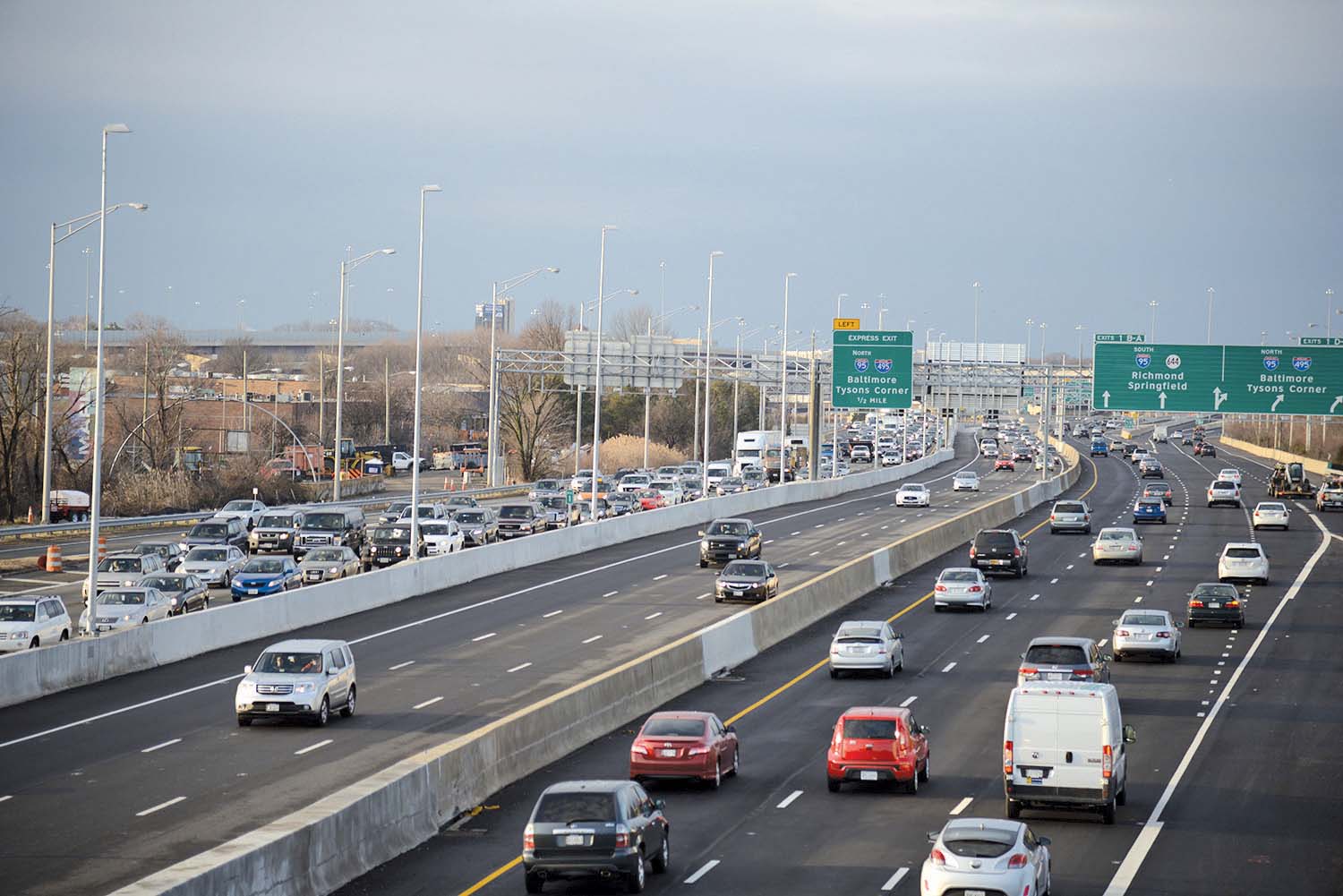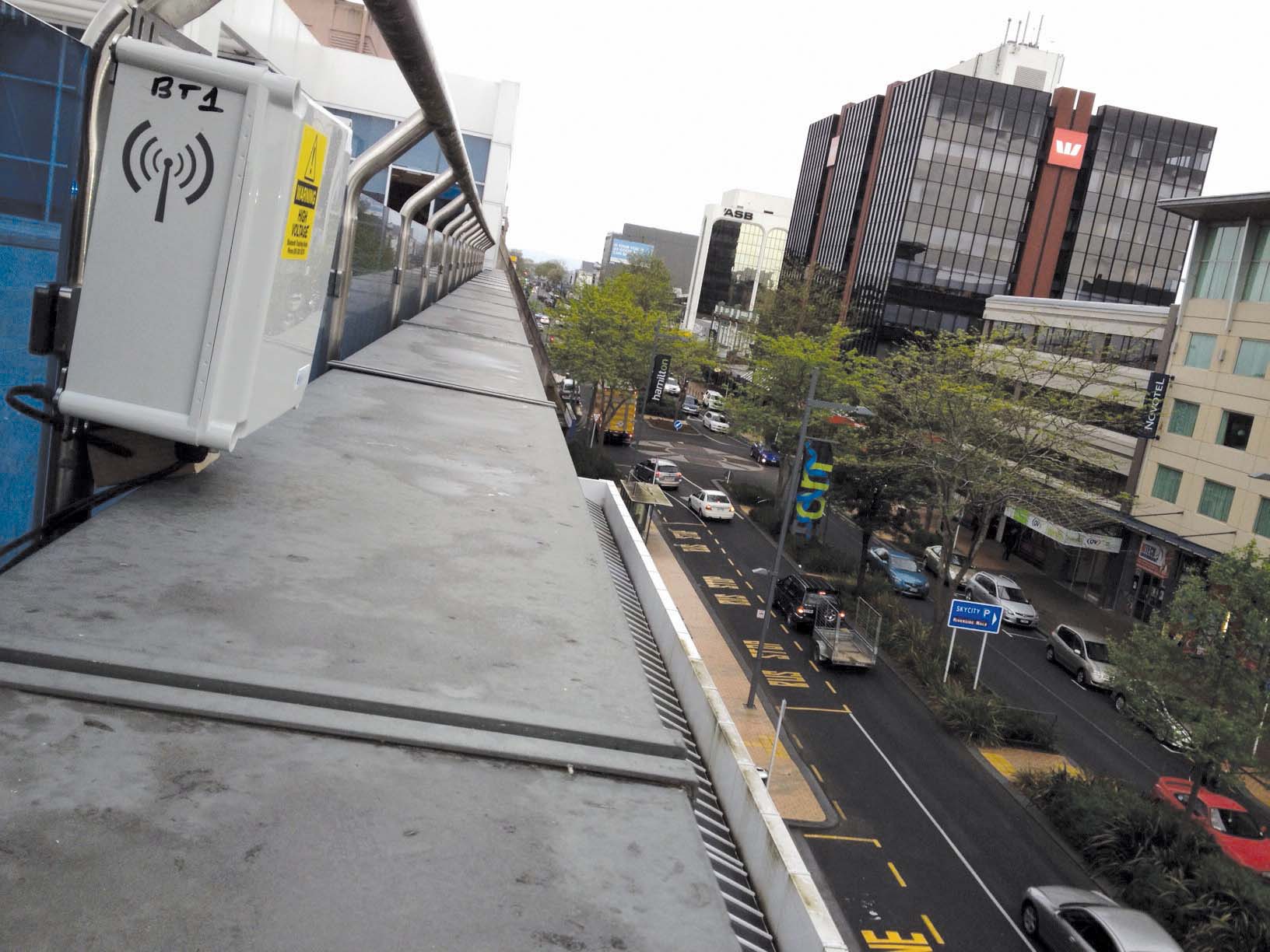
Drivers in the Washington DC area are realising time savings following the opening of Express Lanes on the I-95 - and not only those paying to use the new facility.
Washington is ranked as being the worst gridlocked city in the United States. Every day its drivers face an average commute time of 39.5 minutes and they waste an average of 67 hours every year just sitting in traffic. In a move to counter these problems, late last December new
The almost $1billion project to convert HOV lanes to Express Lanes started in August 2012 and was funded through a Public-Private Partnership (PPP) between the Virginia Department of Transportation (VDOT), the Virginia Department of Rail and Public Transportation, the Federal Highway Administration and
90% Raised from the private sector
32% of the vehicles were HOV3+ exempt
$1bn the cost of the 46.6km (29 miles) Express Lanes on the I-95
20.4km (12.7) miles average trip length
13-33 minutes - average time savings
30 minutes - 2.5hrs maximum time savings
$4.52 average toll
Economically the project is said to have put more than 500 businesses to work, helped generate12,600 jobs and approximately $1.54 billion of economic activity, and was the second largest contribution to Small, Women- and Minority-owned businesses.
In converting the existing I-95 HOV lanes to Express Lanes the aim was to provide drivers with an alternative to joining the gridlock on one of the most congested stretches of highway in Northern Virginia. The Express Lanes are located in the centre of I-95 and are reversible, with gates on the entry and exit points to regulate the direction of the traffic. On workday mornings between 2:30am and 11am, traffic on the Lanes flows northbound toward Washington DC and from 1pm to midnight the direction of travel is southbound toward Fredericksburg. There are closed periods during the change of direction to enable ‘wrong-way’ traffic to clear and these can also be used to carry out maintenance and other work.
The project also expanded the previous two-lane layout to three, extended the system by a further 14.5km (nine miles) and created additional entry and exit points. Now the Express Lanes provide I-95 drivers with easier access to one of the region’s largest employment centres and directly connect to the 495 Express Lanes to create a regional network of HOV/HOT lanes stretching more than 64km (40 miles). New traffic patterns and rules of the road have been introduced along with the requirement for Express Lane users to open an E-ZPass account.
Vehicles with three or more occupants can travel on the Express Lanes free of charge (once their driver has switched the tag to HOV mode) as can motorcycles and although buses are permitted, trucks are not.
The use of all electronic tolling removes the need for booths on the Express Lanes and operates at all times. Dynamic pricing sees toll charges range from $0.124/km ($0.20/mile) during the quieter periods, to approximately $0.5/km ($0.80/mile) in some sections during rush hour. In the three months to the end of March, the average trip length in the Express Lanes was 20.4km (12.7 miles) and the average toll was $4.52. Figures indicate that 32% of the vehicles were HOV3+ exempt - including almost 27,400 bus trips.
Since the beginning of tolling operations at the very end of last year, the financial performance of the Express Lanes is said to have been be ‘in-line with expectations’. On average there are approximately 32,000 trips on the new Express Lanes each day and in its first full quarter the approximate average workday toll revenue was $134,000 with total toll revenue at $9 million for the three months.
Information gathered by the University of Maryland’s Regional Integrated Transportation Information System (an automated data sharing, dissemination and archiving system) has provided evidence of the Lanes’ effectiveness and the results are more than impressive. For instance southbound vehicles travelling the full length of the I-95 Express Lane during the peak period save an average of between 33 minutes (Monday and Friday) and 13 minutes on Wednesdays, while maximum time savings are between 30 minutes and 2.5 hours.
Moves to redesignate HOV to HOT (high-occupancy-toll) lanes has met resistance from some quarters, however Maryland’s data also reveals time savings for those remaining on the free-use lanes. In February 2015, drivers in the regular lanes have seen their travel times reduced by between six and 23 minutes while average speeds have increased by between 17.7 and 33.7km/h (11 and 21mph) compared with a year earlier. This is due in part to drivers diverting onto the Express Lanes reducing traffic volumes on the regular lanes, although it has to be remembered the conversion work which closed the original HOV lanes has been ongoing for more than two years.
The new road layouts and signage has caused confusion among some motorists. Non-registered motorists who inadvertently enter the tolled lanes are being traced through the use of automatic licence plate recognition, contacted and asked to pay the outstanding toll plus an addition administrative charge.
There is a ‘First-Time Forgiveness’ program which waives the additional fees for those registered with E-ZPass who have insufficient credit or have their vehicle registered at the wrong address. Furthermore, regardless of the number of violations a first-timer commits, there is a self-imposed cap of $2,200 (which includes the administrative fee and civil penalties), plus tolls and court fees that will be pursued through the court.
That said, fines for repeated non-payment reach $1,000 for the fourth and subsequent offence within a period of three years.
Nic Barr, Transurban’s vice president of operations, says: “The Express Lanes are helping to alleviate congestion and improve travel times, not just in the Express Lanes, but in the regular lanes as well. The improvements the Express Lanes have delivered to the entire corridor are a testament to why projects like the Express Lanes benefit all drivers – not just those who choose to take the Lanes.”
While the figures from Maryland prove his point, the breakdown of the exact source of those travel-time improvements may take a little longer to determine, and how long those improvements will remain is also unclear. What is evident is that at the moment, commuters on the I-95 are enjoying the easing of the gridlock to which they have become accustomed while the authorities have protected the public budget from the vagaries of toll route economics.
No complaints there then.
| Day of the week | Average February 2014 Regular Lane Speeds | Average February 2015 Regular Lane Speeds | Average Speed Increase |
|---|---|---|---|
| Monday | 53km/h (33mph) | 87km/h (54mph) | 33.8km/h (21mph) |
| Tuesday | 57.7km/h (34mph) | 80km/h (50mph) | 25.7km/h (16mph) |
| Wednesday | 64km/h (40mph) | 85km/h (53mph) | 21km/h (13mph) |
| Thursday | 48km/h (30mph) | 82km/h (51mph) | 33.8km/h (21mph) |
| Friday | 82km/h (51mph) | 100km/h (62mph) | 17.7km/h (11mph) |
| Day of the week | Average February 2014 Travel Time in Regular Lanes | Average February 2015 Travel Time in Regular Lanes | Average Time Savings for Drivers in Regular Lanes |
|---|---|---|---|
| Monday | 49 minutes | 30 minutes | 19 minutes |
| Tuesday | 47 minutes | 32 minutes | 15 minutes |
| Wednesday | 40 minutes | 30 minutes | 10 minutes |
| Thursday | 54 minutes | 31 minutes | 23 minutes |
| Friday | 32 minutes | 26 minutes | 6 minutes |
| Day of the week | Average Travel Time Savings in February 2015 for Express Lane Users | Maximum Travel Time Savings in February 2015 for Express Lane Users |
|---|---|---|
| Monday | 33 minutes | Nearly 2.5 Hours |
| Tuesday | 15 minutes | 1 Hour |
| Wednesday | 13 minutes | 30 minutes |
| Thursday | 19 minutes | Nearly 1 Hour |
| Friday | 33 mintues | 2 Hours |











